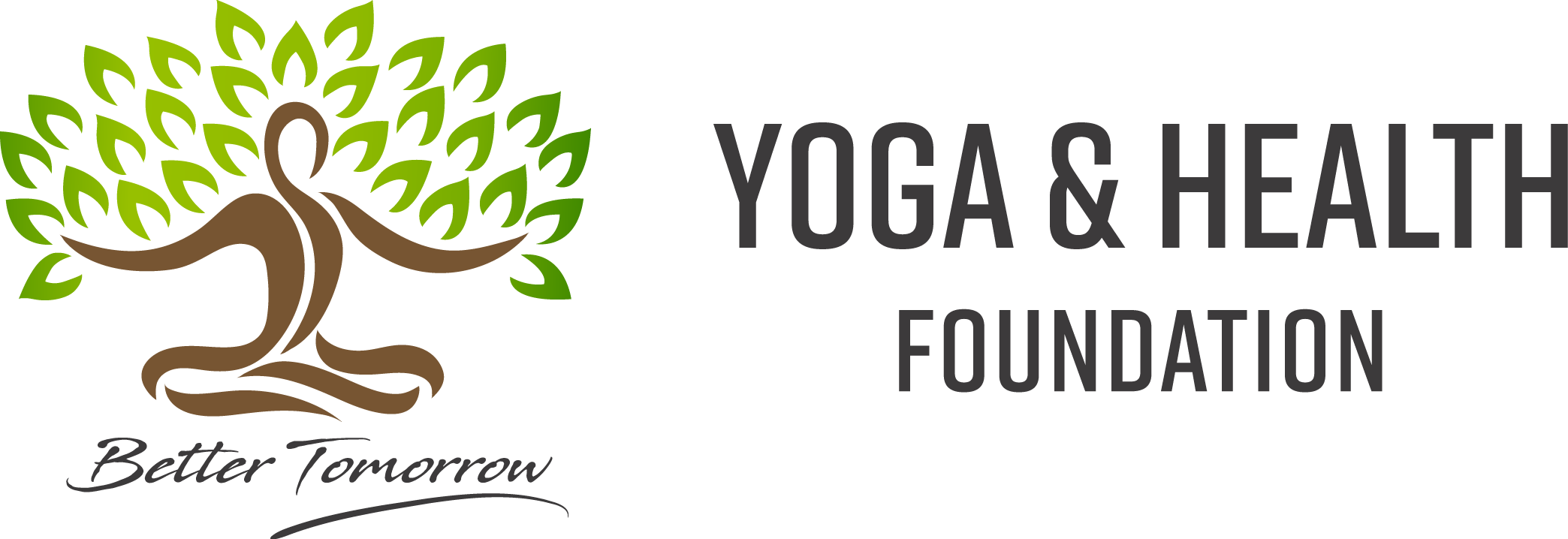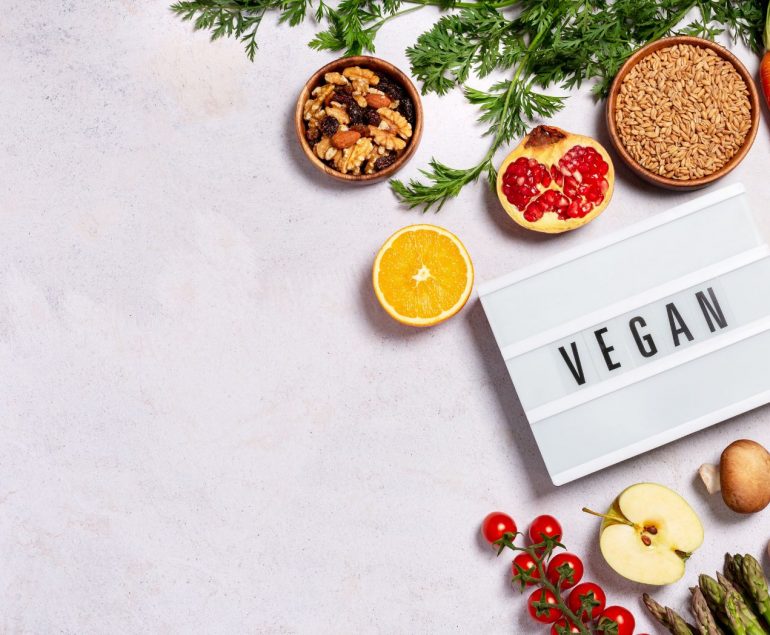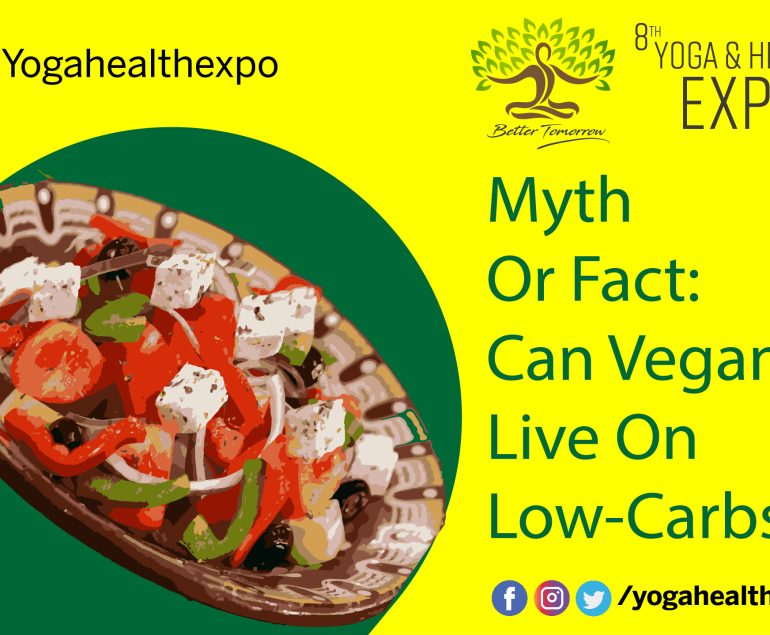Ahimsa and Veganism: The Ultimate Practice of Compassion
Practicing ahimsa means to act with compassion and to do no harm to living beings or nature itself. This principle, and the practice of abstaining from consuming animal products known as veganism, are one and the same. Aligning your thoughts and behaviors with what (who) is on your plate is the ultimate way to practice ahimsa towards yourself, the animals, and the planet.
Ahimsa is the first of the five yamas included in the 8 Limbs of Yoga outlined in Patanjali’s Yoga Sutras. The yamas emphasize self-control or restraint when interacting with the world around us including the rejection of violence, lying, stealing, wasting energy, and possessiveness. The goal of ahimsa is to refrain from causing ourselves or other living beings physical and psychological harm by aligning our thoughts and behaviors with our ethics and morals.
To practice the art of ahimsa to the highest level, or non-violence to all, we must consider all aspects of our lives including what we chose to purchase and consume. Simply put, eating the body parts and excretions of animals who experience immense suffering and are killed for human consumption does not align with this principle of non-violence. Read on to discover how to practice ahimsa with your daily food choices!
PRACTICING AHIMSA FOR ALL LIVING BEINGS

The truth is, consuming meat, dairy, and eggs, and items that contain them, is not necessary at all, and the production of these products is extremely cruel and unnecessary. Like us, animals raised for slaughter, like cows, pigs, and chickens, experience pain, joy, and fear. Like us, they want to enjoy life and protect their babies. Like us, they do not want to suffer. Like us, they do not want to die.
In 2017, a staggering 89 billion land animals were killed for food around the world, including cows, chickens, pigs, fish, and more. China and the United States kill the most animals for consumption, while per capita consumption is highest in the United States. Click here for a live count of animal deaths in the United States.
Like humans, cows are mammals who must be pregnant to produce milk for their young. For this reason, dairy cows are forcibly impregnated against their will to produce milk for humans. When cows give birth, their babies are stolen from them and mother cows are known to show intense grief and mourn the loss of their babies. If their babies are male, they are confined in tiny veal crates where they are unable to move. This confinement prevents the babies’ muscles from developing and toughening up before they are killed for their flesh.
Female calves are destined to become dairy cows like their mothers until they are no longer able to produce milk. They are then sent to slaughter. The natural life expectancy of a cow is approximately 20 years. Tragically, dairy cows are typically killed when they are just 5-6 years old. Cows raised for their meat are killed after just 1-2 years, and male cows are killed for veal at around 8 months.
Pigs raised for slaughter also live drastically shortened lives that are full of suffering, fear, and misery. In large scale facilities, female pigs are forced to live in horrific conditions where they spend all of their days and nights in farrowing crates that are so small they can’t turn around. They give birth to up to a dozen babies per litter and typically cannot move to comfort or bond with them. Piglets who are small, unhealthy, or deemed unprofitable are killed and disposed of or left to die alone on the ground until their tiny bodies are collected and thrown away. The natural life expectancy of a pig is 20 years, however, pigs raised for their meat rarely live past 3 years.
The egg industry breeds layer hens to produce as many eggs as possible, who are then forced to endure cramped, unsanitary facilities. When layer hens give birth to male chicks, they are macerated, or ground up alive, when they are just a day old since they cannot lay eggs. Layer hens and their chicks are not bred to produce meat.
Chickens raised specifically for their meat have been bred to such unnatural sizes that they cannot stand to support their own weight. Chickens often have their beaks cut off without painkillers to minimize damage or injuries to other chickens, which would mean less profit for farmers. The natural lifespan of a chicken is 8-15 years, yet layer hens are killed at 20 months and broiler chickens are killed after approximately 40 days.
Farmed animals are denied joy, family, care, and everything that makes life worth living. Smaller-scale or private farms may allow for some movement, however, the end result is the same: taking the lives of animals who wanted to live. “Free-range” animals and animals raised on organic farms are also slaughtered at just a fraction of their natural lifespan. Click here to learn more about the lifespans of farmed animals.
Watching these life-changing documentaries for free today: Earthlings and Dominion
PRACTICE AHIMSA FOR YOUR HEALTH
NUTRITION
We can get everything we need from plants.
The most common misconception about a plant-based diet is that humans cannot get enough protein or adequate nutrition if they do not eat meat, dairy, or eggs. This is false. Humans need protein to build and repair body tissue, however, we do not need to eat animal meat to get it. We need calcium to build and maintain strong bones and other body functions, yet we do not need not animal milk or dairy products. We need omega-3’s for healthy body functions, but we do not need to consume fish.
Plants have protein. Beans, legumes, tofu, lentils, hemp seeds, peas, and quinoa are just a few sources of clean, plant-based protein. Broccoli, asparagus, Brussels sprouts, greens, and other vegetables can also be excellent sources.
Calcium is a mineral that originates in soil, which is absorbed through the roots of plants, making them a direct source of the mineral. Unlike common beliefs, humans do not need to get calcium by consuming the milk of a cow or other animal, which is intended to provide vital nutrients to their babies.
According to the Physicians Committee for Responsible Medicine (PCRM), the most healthful calcium sources are leafy vegetables and legumes, not milk or dairy. In direct contrast to what we have been told throughout our lives, the PCRM asserts that “animal protein—fish, poultry, red meat, eggs, and dairy products—tends to leach calcium from the bones and encourages its passage into the urine. Plant protein—in beans, grains, and vegetables—does not appear to have this effect.”
Simply put, studies show that milk and dairy products actually weaken bones and increase the risk of fractures, while plants strengthen them. Broccoli, Brussels sprouts, kale, and greens are excellent sources of highly absorbable calcium and other beneficial nutrients, vitamins, and minerals. Fortified foods, such as juices and cereals, can also provide adequate calcium in a balanced diet.
Vitamin B12 is another hot topic in relation to vegan diets. B12 is produced by bacteria in the soil, which is absorbed into the roots of plants. These plants are consumed by animals and then consumed by humans who eat animal products. Animals also have B12 producing bacteria in their bodies. Since vegans abstain from animal products, they must make an effort to acquire B12 from fortified foods, certain cereals, soy milk, and nutritional yeast. To ensure you are getting a consistent, adequate amount of the vitamin, a supplement is the most convenient and reliable method to do so.
Omega-3 fatty acids (ALA, DHA, and EPA) are essential to heart and brain health. Luckily, there are plant-based sources available that contain a host of other beneficial nutrients. Flaxseeds contain high levels of ALA and they must be ground up to be digested. Just half of a tablespoon of ground flaxseed provides an entire day of recommended ALA, along with fiber, protein, and Vitamin A. Flaxseed oil is also available and contains much higher levels of AHA per serving.
Chia seeds also contain high levels of ALA. It is recommended to grind them into a powder to make them easier to digest but it is not required. Chia seeds may also be made into chia pudding by mixing the seeds with a liquid such as plant-based milk or water. Walnuts are another great source of ALA, with 6 halves equaling the same amount of ALA than a tablespoon of flax or chia seeds.
DHA and EPA must be found in other plant-based sources. It was once thought that fish produce these two omega-3 fatty acids, but this is not the case. Fish actually consume DHA and EPA from algae and then humans consume the fish. Seaweed, nori, spirulina, and chlorella are different forms of algae and some of the very few plant-based sources of DHA and EPA. Algae supplements can also be taken.
DISEASE PREVENTION
The Physicians Committee for Responsible Medicine indicates that milk and other dairy products are the top sources of artery-clogging saturated fat in the American diet. Diets that are high in saturated fats and cholesterol are linked to heart disease, type II diabetes, and Alzheimer’s disease. Studies also link the consumption of dairy products with an increased risk of prostate, ovarian, and breast cancers.
Studies have also shown that eating processed meats, such as hot dogs and bacon, is a major contributor to colorectal cancer and also increases the risk of prostate, pancreatic, and breast cancers. The correlation is so strong, the World Health Organization recently classified processed meats such as hot dogs, bacon, sausages, and beef jerky as carcinogenic to humans (Group 1), which is in the same category as tobacco smoking and asbestos. According to the National Institutes of Health, people who eat processed meats also have an increased risk of cardiovascular disease.
Cholesterol is a fat that is naturally produced in your liver. Animals also produce cholesterol which is consumed by humans when their body parts are eaten. Red meat has been linked to diabetes, heart disease, and certain cancers. White meat, on the other hand, has long been believed to be the healthier option, however, a recent study shows that both red meat and white meat are equally harmful to blood cholesterol levels. Since plants do not produce or contain cholesterol, The American Journal of Nutrition indicates that non-animal proteins, such as vegetables, dairy, and legumes, proved to be most beneficial for cholesterol levels.
Animals who are bred for slaughter are often pumped with growth hormones to increase the overall mass of the animals’ tissues and organs that are sold. Farmed animals are regularly fed antibiotics to combat the bacteria and viruses that thrive in the disastrously unsanitary factory farms or CAFOs (concentrated animal feeding operations). Animals are forced to live in cramped conditions in their feces and urine without medical care, in other words, they live in a literal breeding ground and reservoir for disease. To combat infections and the spread of pathogens, factory farms have been feeding animals antibiotics for decades.
The ever-growing list of deadly bacteria and viruses that occur in animals and can be transmitted to humans includes salmonella, MRSA, swine flu (H1N1), bird flu (H5N1), a form of mad cow disease caused by eating the tissue of an infected animal, and many more. Since antibiotics have been used so extensively on factory farms, bacteria and viruses have mutated and have become resistant to antibiotics. New antibiotics are being developed to combat these antibiotic-resistant strains of bacteria, and the cycle of mutation continues. This cycle may lead to new pathogens that humans have never seen before and may not be equipped to fight off, even with medication.
The Centers for Disease Control and Prevention (CDC) reports that three out of every four new or emerging diseases found in people come from animals. Due to the international importation and exportation of meat, the spread of these pathogens between countries is probable, which is why factory farming is predicted to be the culprit of the next global health crisis.
Stream these compelling documentaries to learn more about the power of a plant-based diet on Netflix or Youtube:
PRACTICING AHIMSA FOR THE PLANET
Animal agriculture causes undeniable harm to our environment and is responsible for 14.5% of global greenhouse gas emissions. Raising and killings animals for human consumption also contributes to habitat loss, species loss, as well as water and soil pollution.
A staggering 83% of the world’s agricultural land is used to raise animals for slaughter or to grow animal feed. Beef production uses 20 times more land than the production of plant-based foods, such as beans, lentils, and peas. Chicken production requires 3 times as much. In the United States alone, raising animals for slaughter contributes 66% of agricultural greenhouse gas emissions, including carbon dioxide (CO2), methane (CH4), and nitrous oxide (N2O), which trap heat inside of the earth’s atmosphere and raise surface temperatures.
Another result of factory farming is the production of 500 million tons of manure in the U.S. alone, which releases toxic gases into the air and seeps into groundwater and waterways. Raising animals for slaughter also requires significant quantities of water, which is primarily used to produce animal feed. Click here to compare the water footprints of animal products with fruits and vegetables.
Tragically, 80% of the Amazon rainforest has been cleared to raise cattle or to produce soy for animal feed. The Amazon rainforest plays a major role in combating climate change by absorbing carbon dioxide. The ability of the rainforest to absorb CO2 is desperately needed as the world experiences unprecedented wildfires, flooding, drought, heatwaves, and storms caused by increasing global temperatures. Read more about the long-term effects of climate change from the Intergovernmental Panel on Climate Change here.
Stream these documentaries to learn more about the effects of animal agriculture on our environment!
Since most people do not interact with animals who are raised for slaughter, it can be difficult to acknowledge them as living beings who are able to feel pain, love, and fear and not just products on our plates. Animals suffer immensely at the hands of humans. By eating the bodies and excretions of slaughtered animals who wanted to live, we are consuming suffering and violence which in no way aligns with the principle of ahimsa.
By practicing veganism, we are rejecting harm to our bodies and minds, we are rejecting violence to innocent animals, and we are rejecting the destruction of our planet and all beings we share it with. We are practicing ahimsa to the highest level.
Peace starts on your plate. Namaste.
Contributed by: Julie Ann Massa, MAT, BS, BA, RYT-200
Animal Rights Activist, Biology Teacher, Cruelty-free Lifestyle Blogger & Yoga Instructor
VeganTreasureHunter.com










